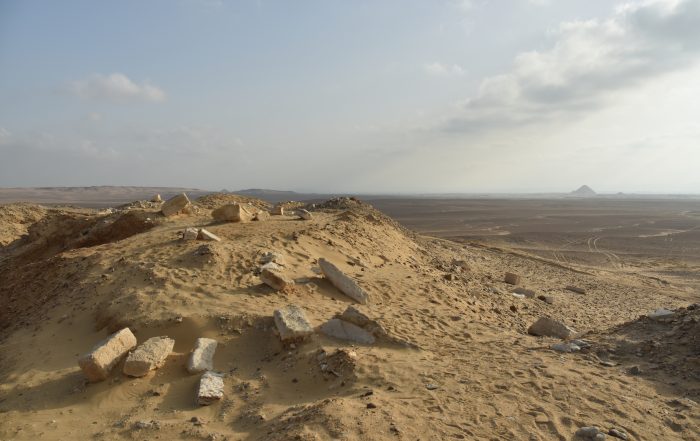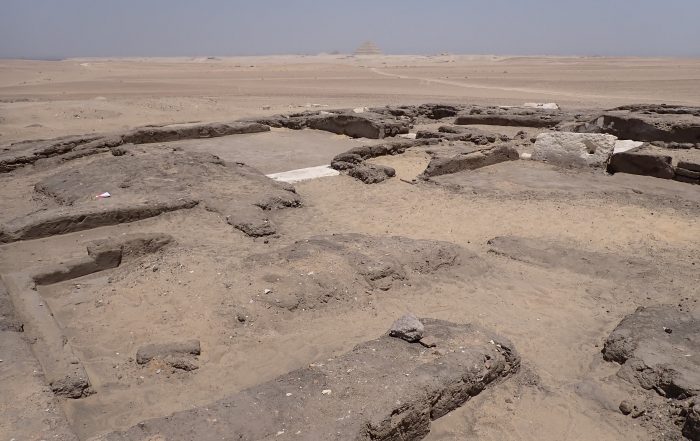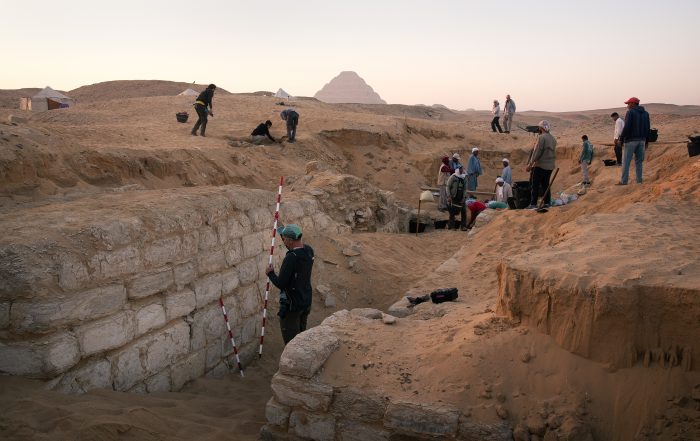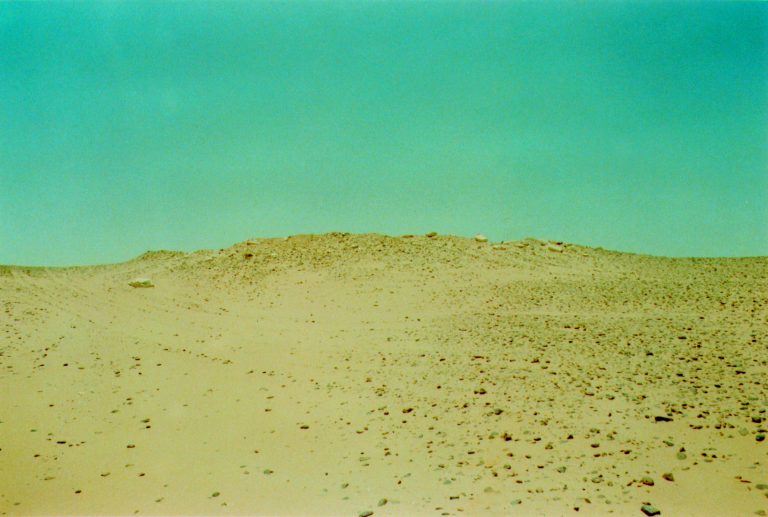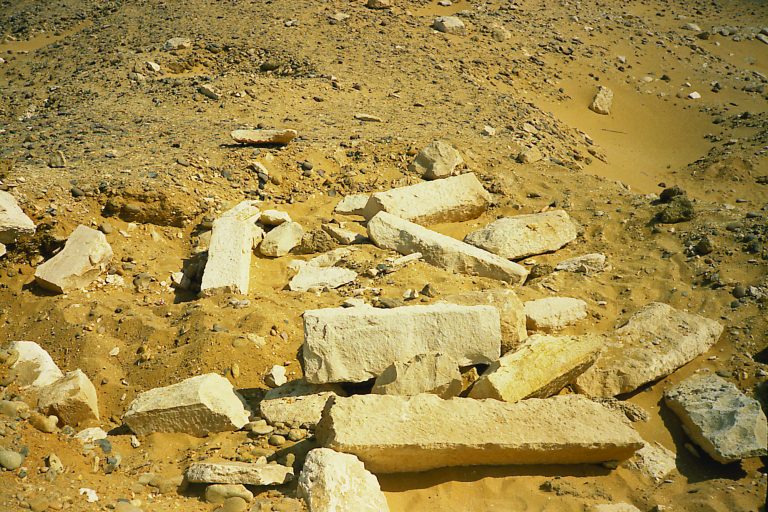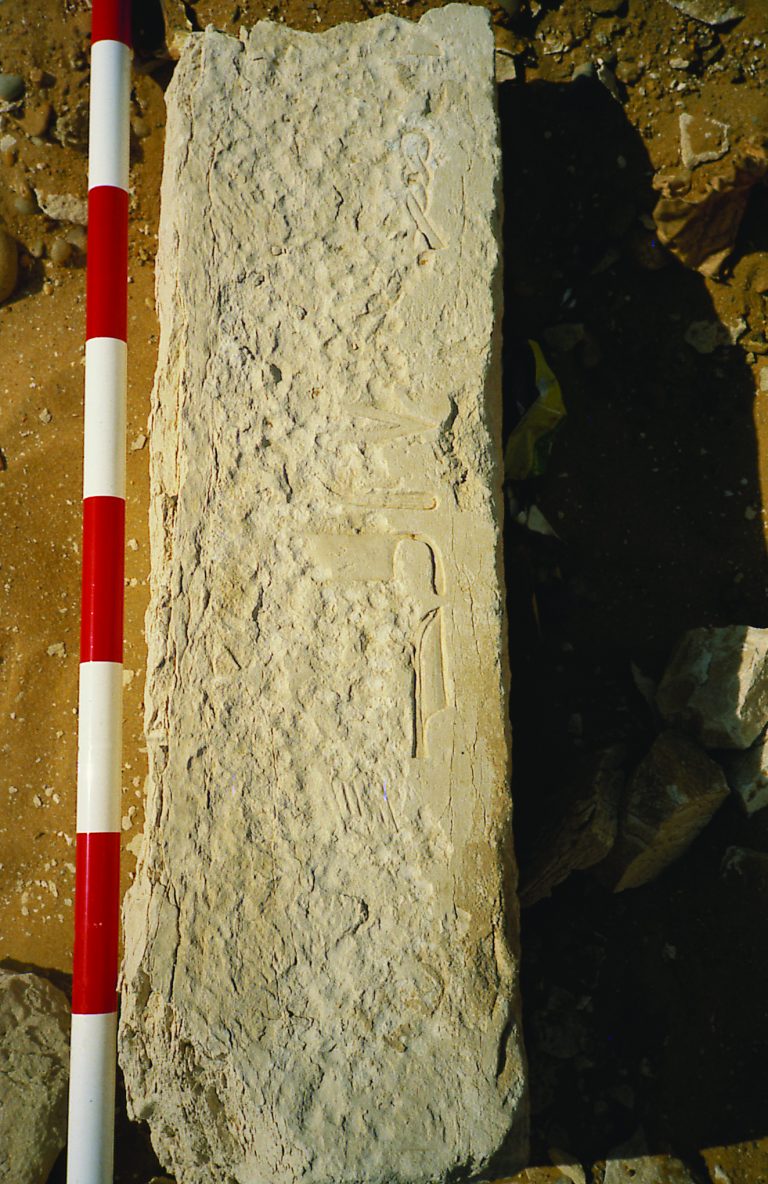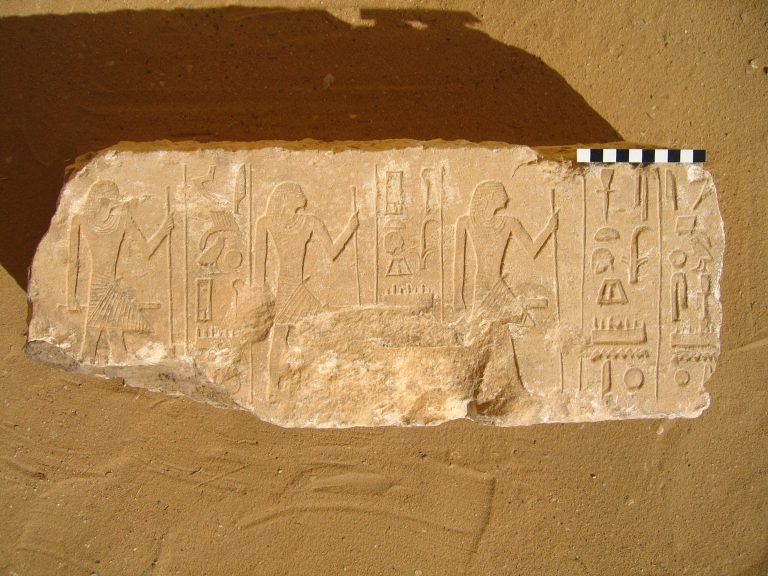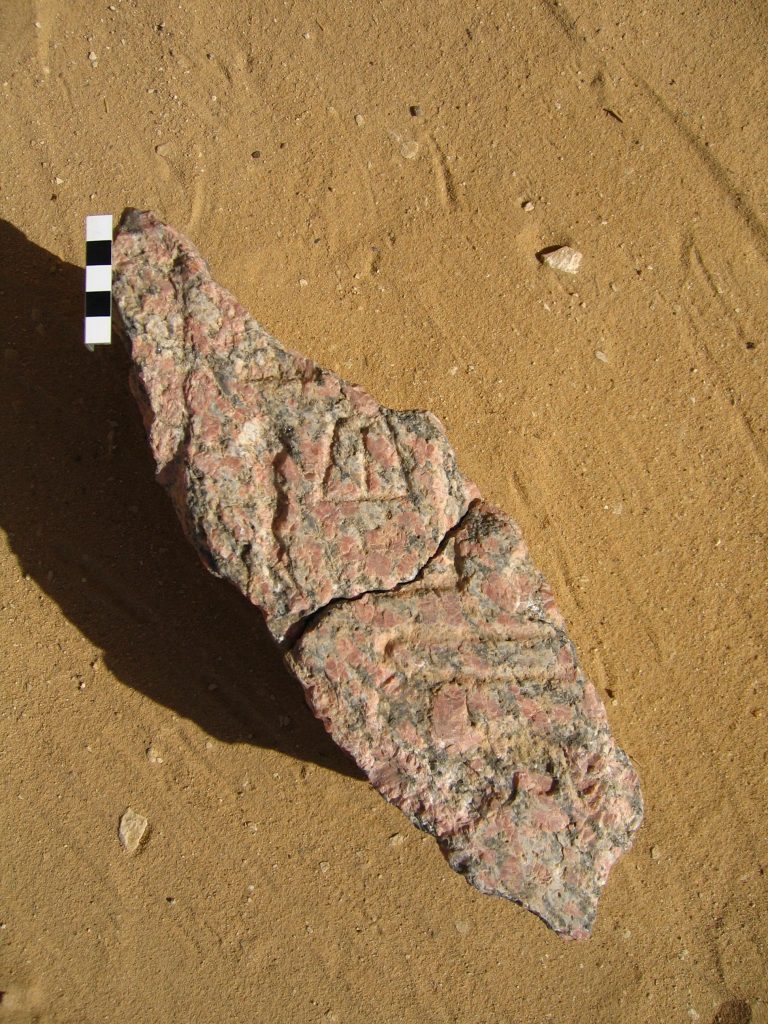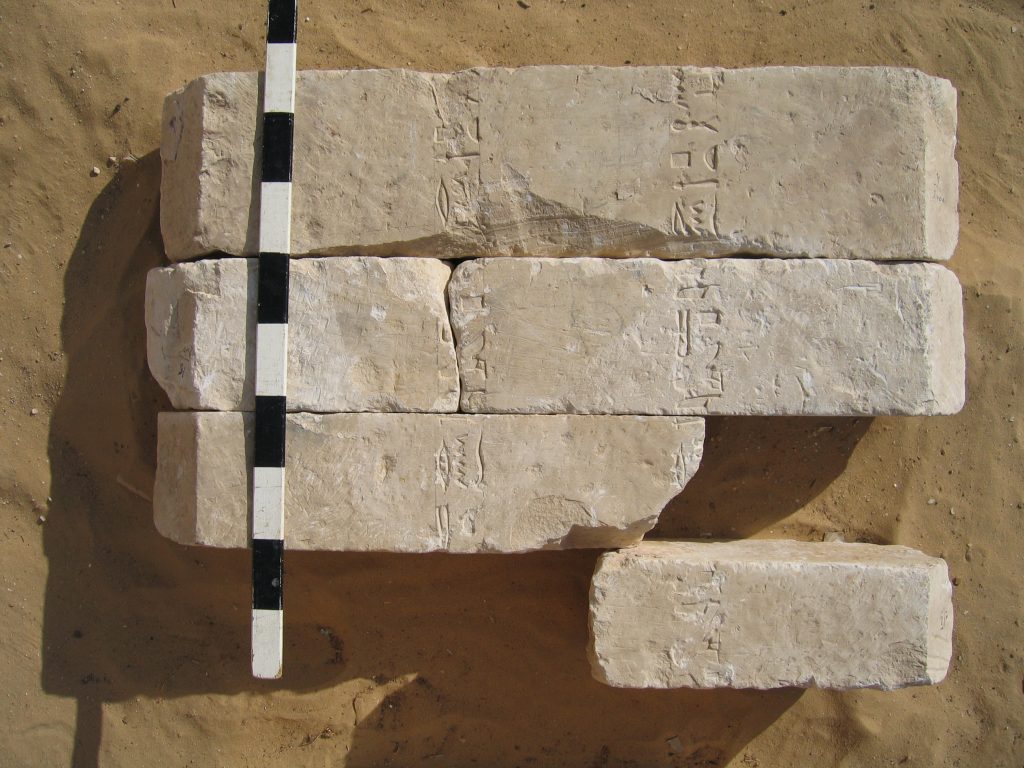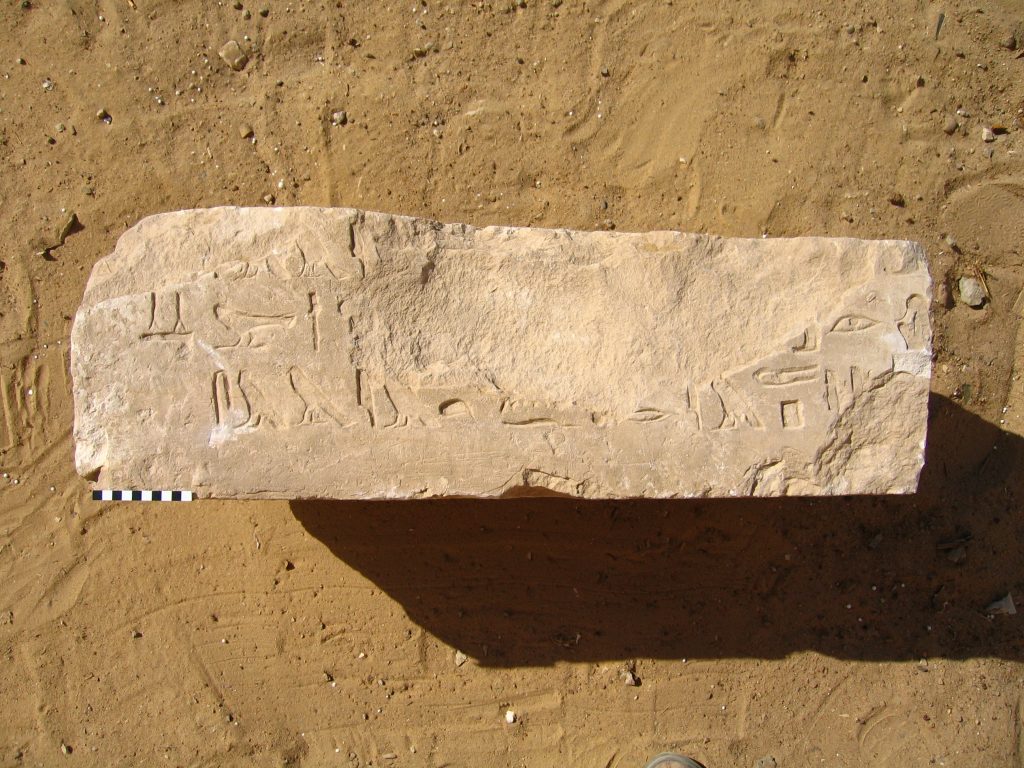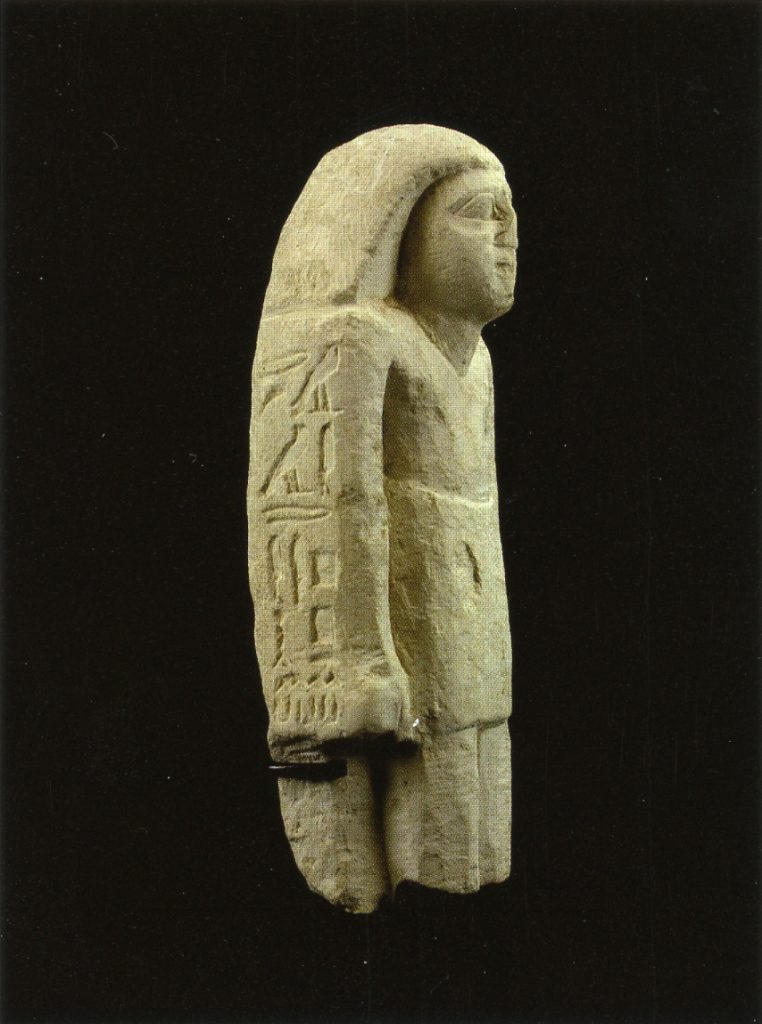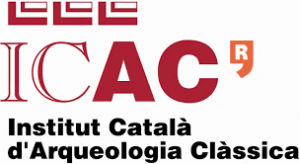SEAMS
Although the Spanish-Egyptian Archaeological Mission in Saqqara (SEAMS) was officially established in 2019, the project as a whole is much older: 2022 marked 25 years since its inception.
The Mission has gone through two phases. The first phase from 2019 to 2022 and consisted of the excavation of the site of Kom el-Khamaseen (the initial aim of the Mission), the systematic survey of the entire desert area surrounding this site, and the excavation of a second site, hitherto unknown, discovered during this survey. Kom el-Khamaseen is a small necropolis dating from the end of the Old Kingdom to the Middle Kingdom, with particular activity during the First Intermediate Period. The second site was found to be a small royal cultic complex from the New Kingdom.
The second phase started in 2023. Our activity has moved to northern Saqqara, to the cemetery of the high priests of Ptah and Sokar of Memphis during the Old Kingdom, located northwest of the step pyramid of Netjerkhet-Djeser. We are working in the area of the mastabas of Ranefer (5th Dynasty) and Sabu Tjety (6th Dynasty), where we have carried out archaeological and geophysical surveys and geological and topographical studies and have begun excavations.
A survey in 1997
In 1997 a team from the Institut d’Estudis del Pròxim Orient Antic (IEPOA) (Institut for Ancient Near Eastern Studies) of the Universitat Autònoma de Barcelona (Spain), under the direction of Dr Josep Cervelló Autuori, carried out an archaeological survey in the site of Kom el-Khamaseen, located 3,2 km. west of the pyramid of Djedkare Isesi, in the South Saqqara Desert. It lies upon a natural kom (fig. 1).
The site had already been disturbed when we visited it and a large number of architectural remains lay scattered over an area of 40 x 25 m approximately, especially in the south half of the kom. The most widespread material was limestone (fig. 2). Two types of blocks or block fragments could be distinguished: rectangular blocks (20 to 35 cm both deep and wide x 70 to 110 cm long), and more square blocks (20 to 30 cm deep x 40 to 50 cm both wide and high). All of them were very regular in shape and were the parts of the limestone coating from the walls and chapels of a tomb (or perhaps several tombs).
Beside the limestone blocks, granite block fragments, mainly in the northern half of the site, were also recorded. As for pottery, only a few shards were recorded in the south-western area of the site. No traces of mudbrick were found.
All this material showed extensive damage, because of the weathering and wind erosion, and there were clear traces of tomb robbing and illicit digging; in fact, large-size round holes, filled with loose wind laid sand, were clearly visible (fig. 2). In spite of this, 4 blocks or block fragments preserved traces of inscriptions nad reliefs. The titles of smr waty, Xry-Hbt, imy-rA a(Aw) (fig. 3), imy-rA pr y Hmt-nTr Hwt-Hrw, as well as the epithet imAxw y and the female name xnwt associated with the female title, were recorded. The name and title of the lady were on the same much damaged block as a relief fragment showing the upper part of the legs of a nobleman wearing a short and fishing in the marshes, a typical iconographic motif in the decorative programs of the tombs of the VI dynasty high rank noblemen.
The shape of the limestone blocks, epigraphy and iconography suggested that Kom el-Khamaseen was a little necropolis of the end of the Old Kingdom. The results of this work were published in 2006 in the ASAE.
The work at El-Mohemat magazine in Saqqara in 2005/2006
In 1999 the site of Kom el-Khamaseen was severely plundered, and the Inspectorate of Saqqara, under the responsibility of Dr Mohammad Mohammad Youssef, recovered from there a total of 62 limestone and granite blocks or block fragments with inscriptions and reliefs. Of these, 57 are blocks or fragments of limestone and 5 are fragments of granite; and 52 correspond to building elements, such as walls, lintels or roofs, and 10 are small fragments of false door stelae or offering tables. The inscribed blocks from the 1997 survey were not retrieved.
In 2004 Dr Cervelló Autuori submitted an application to the SCA asking to study this material, stored in the El-Mohemat magazine, in Saqqara. The work was made in 2005 and 2006. The results were very interesting. The new material enabled us to refine our understanding of the site and to conclude that Kom el-Khamaseen was a small necropolis were individuals of different status were buried in graves apparently of different size and richness from the end of the Old Kingdom up to the beginning of the First Intermediate Period. In fact, the fragments of two cartouches, the first one with the name of Pepy and the second one with Neferkare (which probably correspond to the same king) point to the last reign of the Old Kingdom; and the paleography and the titles fo the most important individual now documented point to the beginning of the First Intermediate Period.
The names of three new individuals and some of their titles were recorded. The title of imy-rA a(Aw) has not appeared again, and may correspond to a fourth individual or to one of these three. Along with the lady Khenut, then, we could have, as a minimum, 4 or 5 people buried in the site. Two fragments of inscriptions belonged to a mti (n) zA xntyw-S of a pyramid, called Sankhhathor-Pepy. A fragment of a lintel records the images, name and titles of the smr, Xry-tp nswt and HoA-Hwt Menkhi (fig. 4).
The last of the documented individuals stands out because of this rank and historical importance. This is Imephor, great priest of Ptah at Memphis. He is, moreover, the best documented: if all the previous individuals were known to us from only one or two limestone block fragments, Imephor was known through 25. He was furthermore associated with the 5 recovered granite fragments, which appear inscribed with his names and titles (fig. 5). This proves the richness of his tomb, since granite is a material reserved to the high rank people. Some rectangular limestone blocks, also inscribed with his names (fig. 6), formed the pitched roof of a little chapel, probably the burial chamber. The inscriptions record the beautiful name and the great name of Impehor, respectively, Impy and Nikauptah. The most important of his titles are: wr xrpw Hmww («overseer of the chiefs craftsmen» = «great priest of Ptah»), sm, Xry-Hbt Hry-tp y HAty-a (fig. 7).
The results of this work were the object of several publications.
2009 to 2019: from Saqqara to art galleries around the world
After the looting of Kom el-Khamaseen in 1999, the members of the Spanish team and the SCA authorities were convinced that the material stolen from the site would appear on the art market around the world sooner or later. Actually, the material related to Imephor is easy to recognize because of the paleography of the inscriptions and the fact that this proper name is a hapax. Indeed, from 2009 to present around 30 pieces, including limestone block fragments and statuettes, all inscribed with the names and title of Imephor, have been documented in art galleries around the world, especially in Spain, England, and Australia. In some cases, following a trial, the pieces have been returned to Egypt. In this regard, the video on can be seen:
Saqqara. Decosmisos arqueològics
In some cases, we have had the occasion to see and study these pieces.
The inscribed blocks from the art galleries give us new titles and epithets of Imephor, some of them certainly important in order to understand his career (fig. 8): imA-a, «gracious of arm (?)» (reserved to viziers and higher rank officials), xrp iAt nbt nTrt and ir m awy=f. And the sattuettes, with no parallel in the Egyptian art of this period, bear his names on their right arm (fig. 9).
We already published some of these documents.
On the other hand, during these same years Dr Mohammad Youssef has been able to recover other block fragments from the site, as a result of new occasional raids by robbers, and to point out some archaeological structures and materials in the surroundings. This is the reason why our work falls into the category of salvage archaeology and why the intervention was urgent.
From 2019 to the present: constitution of the Mission and first seasons
Thus, Josep Cervelló and Mohammad Youssef considered that the time has come to excavate Kom el-Khamassen and recover from there all the material that still remained, in order to complete the archaeological and epigraphic information. The Mission was set up in 2019 with this initial objective in mind. The aim was also to prospect the entire surrounding area to find out if there were any other archaeological sites or remains there and, eventually, to study the occupation patterns of the territory. Indeed, during the exhaustive survey carried out in 2019, a second site was found in the concession, which had not been documented until then and which has turned out to be a royal cultic complex from the New Kingdom, specifically from the middle of the 18th dynasty.
Between 2019 and 2022, three seasons were carried out, the last one in two periods: Season 2919 (June), Season 2021 (April-May), Season 2022 (April-May and November-December). In 2020 there was no work season due to the Covid 19 health crisis.
These campaigns have resulted in numerous publications and keylectures and communications at international congresses. Other publications are in press and the final monograph by Kom el-Khamaseen is on preparation.
With work at Kom el-Khamaseen and the surrounding area now complete, the Mission has obtained a new concession from Egypt’s Supreme Council of Antiquities in northern Saqqara, in the cemetery of the high priests of Memphis of the Old Kingdom, northwest of the step pyramid. The aim of the new project is to re-excavate and study the mastabas in a section of the so-called ‘Mariette Cemetery’, which was excavated by Auguste Mariette in the 1860s, including those of the high priests of Memphis, Ranefer (5th Dynasty) and Sabu Tjety (6th Dynasty). The Season 2023 (June) and Season 2024 (October-November) were the first under the new concession.
Sponsors and collaborators

